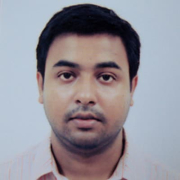

Teradata and Azure Data Factory are prominent competitors in the data management and integration domain. Azure Data Factory holds a slight edge due to its user-friendly, cloud-native design, offering seamless integration capabilities.
Features: Teradata is known for its massive parallel processing and scalability, providing options from on-premise to hybrid cloud deployments. It boasts advanced analytics capabilities and robust security features like Teradata Columnar and Temporal. Azure Data Factory is celebrated for its ease of use and offers a comprehensive array of connectors, along with strong orchestration capabilities, making it ideal for cloud-native ETL processes. Its cloud-based model ensures smooth integration with other Azure services, enhancing flexibility for real-time analytics.
Room for Improvement: Teradata users see a need for better cloud functionality and security integration, with attention to reducing high costs and improving unstructured data handling. Enhancing scalability for multi-cloud environments is also desired. Azure Data Factory could benefit from improved real-time processing, more connectors, and simplified pricing models, along with user interface and documentation enhancements to streamline deployment and increase advanced features such as machine learning integration.
Ease of Deployment and Customer Service: Teradata provides diverse deployment options, focusing more on technical excellence and in-house support, though its response times need improvement. Azure Data Factory is cloud-based, simplifying deployment for Azure-centric businesses, and benefits from integration with the Azure ecosystem, providing solid technical support.
Pricing and ROI: Teradata is expensive but offers high value for large-scale operations through robust performance and analytics. It suits existing Teradata environments where the ROI aligns with strategic data initiatives. Azure Data Factory's pay-as-you-go model attracts organizations seeking cost flexibility but requires careful monitoring to prevent overages. Both solutions offer substantial ROI by optimizing data processes and improving business insights.
The technical support is responsive and helpful
The technical support from Microsoft is rated an eight out of ten.
The technical support for Azure Data Factory is generally acceptable.
The technical support from Teradata is quite advanced.
Customer support is very good, rated eight out of ten under our essential agreement.
Azure Data Factory is highly scalable.
This expansion can occur without incurring downtime or taking systems offline.
Scalability is complex as you need to purchase a license and coordinate with Teradata for additional disk space and CPU.
The solution has a high level of stability, roughly a nine out of ten.
I find the stability to be almost a ten out of ten.
The workload management and software maturity provide a reliable system.
There is a problem with the integration with third-party solutions, particularly with SAP.
Sometimes, the compute fails to process data if there is a heavy load suddenly, and it doesn't scale up automatically.
Incorporating more dedicated API sources to specific services like HubSpot CRM or Salesforce would be beneficial.
Unlike SQL and Oracle, which have in-built replication capabilities, we don't have similar functionality with Teradata.
The pricing is cost-effective.
It is considered cost-effective.
Initially, it may seem expensive compared to similar cloud databases, however, it offers significant value in performance, stability, and overall output once in use.
Teradata is much more expensive than SQL, which is well-performed and cheaper.
It connects to different sources out-of-the-box, making integration much easier.
The interface of Azure Data Factory is very usable with a more interactive visual experience, making it easier for people who are not as experienced in coding to work with.
I find the most valuable feature in Azure Data Factory to be its ability to handle large datasets.
The data mover is valuable over the last two years as it allows us to achieve data replication to our disaster recovery systems.


Azure Data Factory efficiently manages and integrates data from various sources, enabling seamless movement and transformation across platforms. Its valuable features include seamless integration with Azure services, handling large data volumes, flexible transformation, user-friendly interface, extensive connectors, and scalability. Users have experienced improved team performance, workflow simplification, enhanced collaboration, streamlined processes, and boosted productivity.
Teradata is a scalable data analytics platform designed to meet enterprise demands for large-scale data management and processing, focusing on performance, scalability, and security for complex query executions.
As a leading data warehousing solution, Teradata integrates advanced analytics enabling organizations to derive insights from massive datasets. It supports high-volume data workloads with its architecture optimized for analytical queries. Users benefit from its robust scalability, allowing seamless expansion as data grows. Teradata's SQL engine is compatible with a wide range of data types, ensuring flexibility in data analysis. With advanced security measures, it protects sensitive data across various environments, providing peace of mind to users handling critical information.
What are the most important features of Teradata?Teradata is widely used in industries like finance, telecommunications, and healthcare, where data-driven decisions are critical. Companies leverage its robust analytics capabilities to enhance customer experiences, streamline operations, and ensure compliance with regulatory requirements. In these sectors, quick access to data insights can significantly impact competitive advantage.
We monitor all Data Integration reviews to prevent fraudulent reviews and keep review quality high. We do not post reviews by company employees or direct competitors. We validate each review for authenticity via cross-reference with LinkedIn, and personal follow-up with the reviewer when necessary.